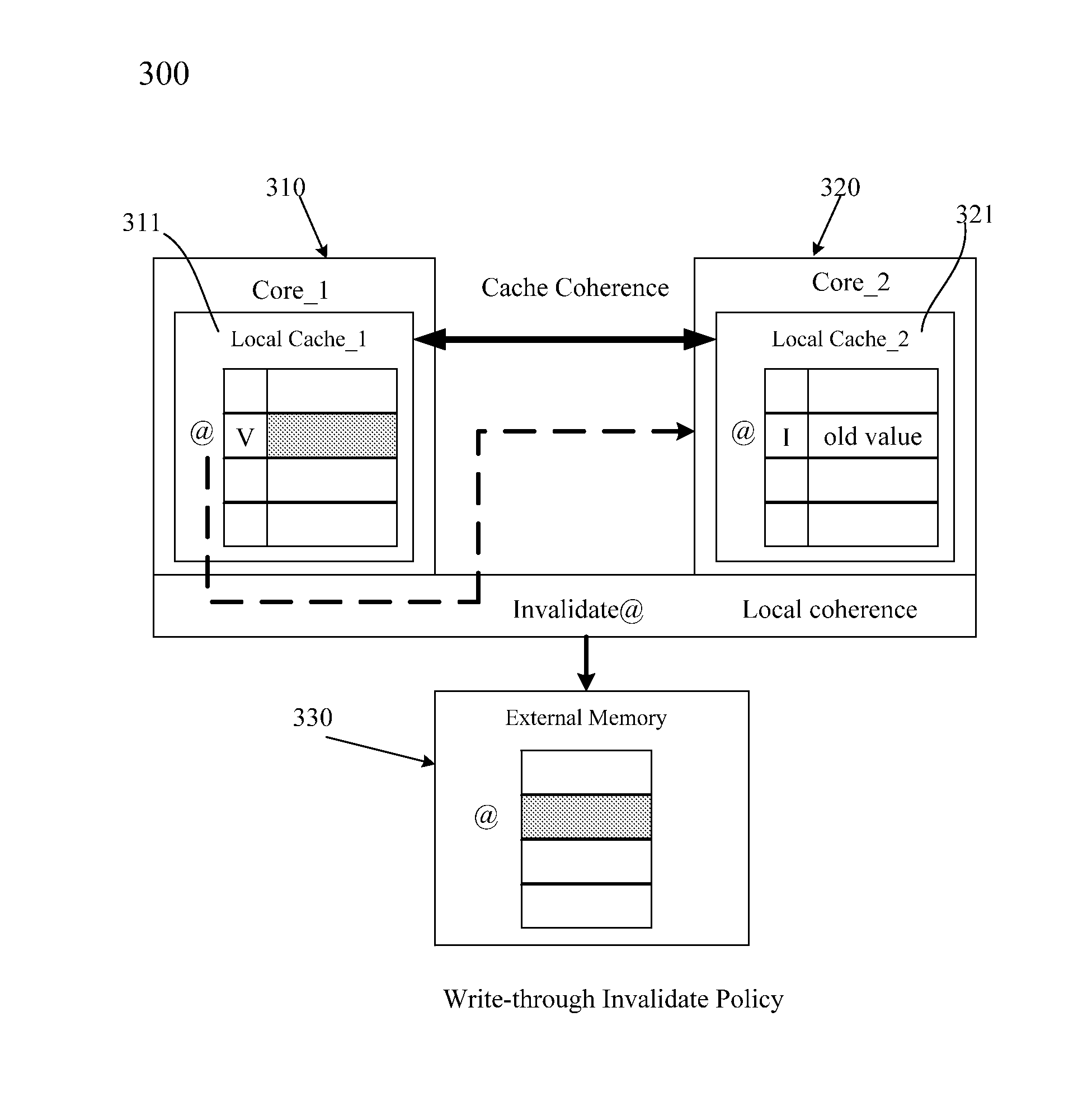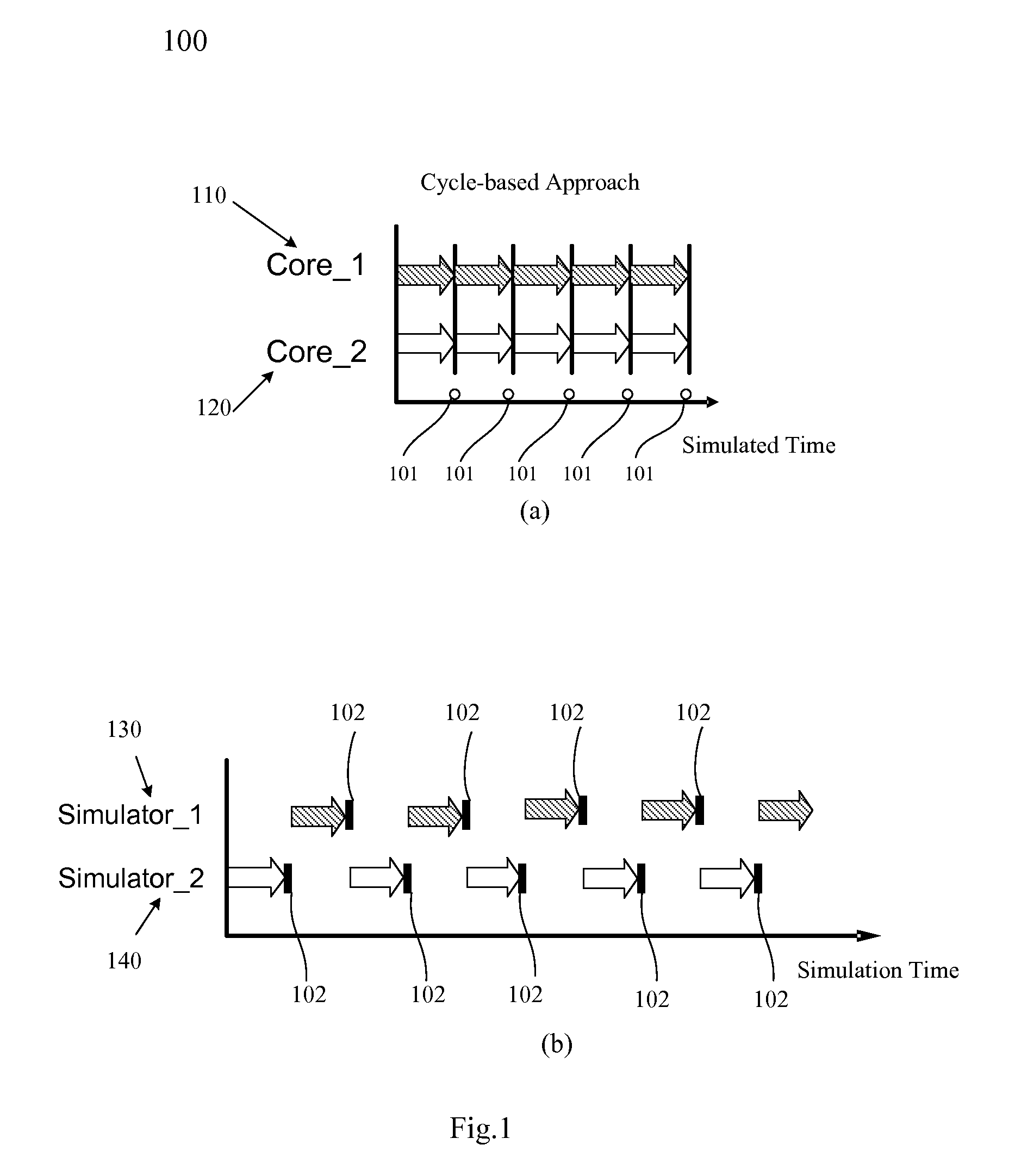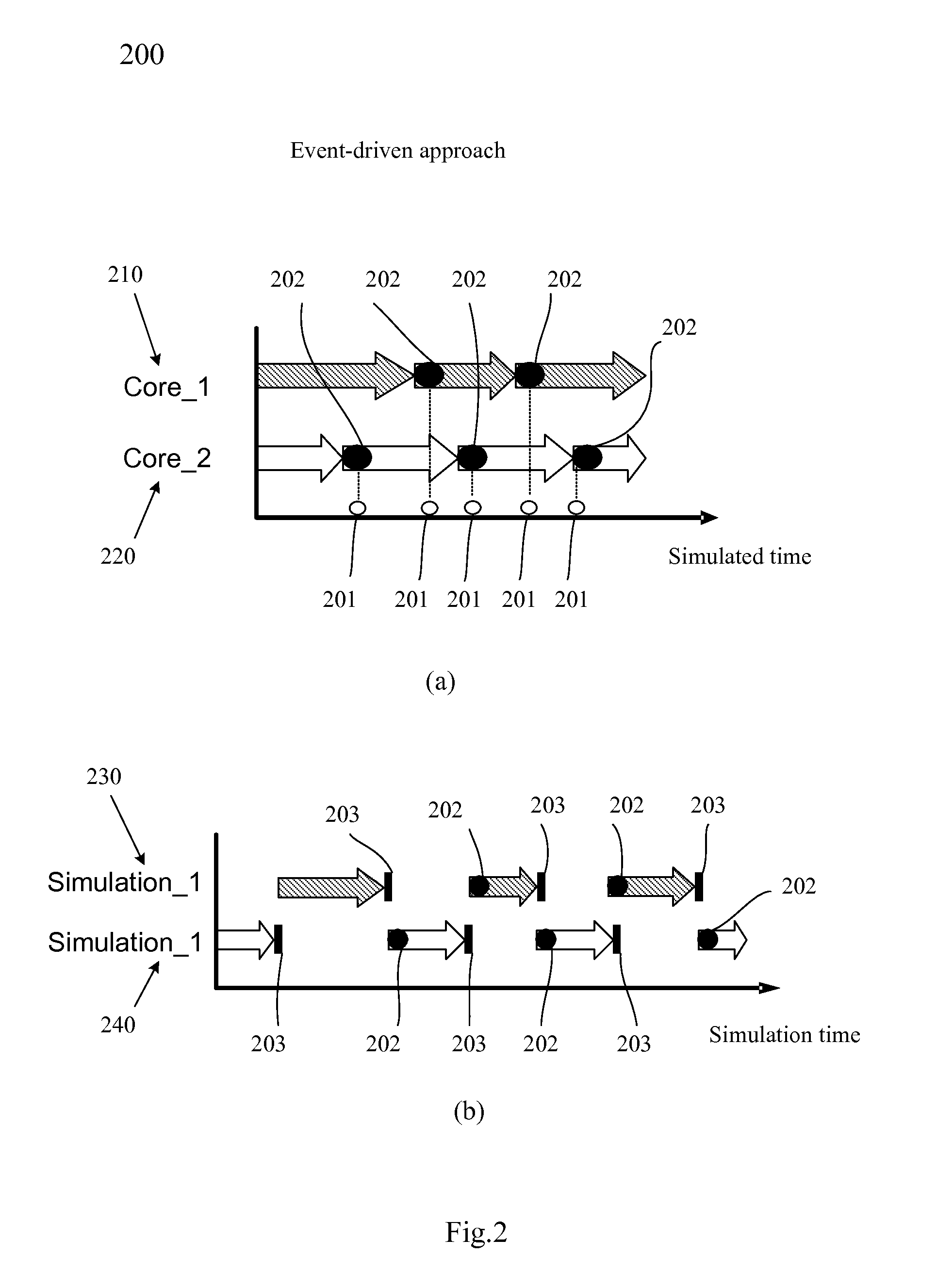Shared-Variable-Based (SVB) Synchronization Approach for Multi-Core Simulation
a synchronization and multi-core technology, applied in the field of shared variable-based (svb) synchronization approach for multi-core simulation, can solve the problems of large synchronization overhead, large portion of simulation time spent on context switching, and inability to coherence simulation approaches, etc., to achieve the effect of improving simulation efficiency
- Summary
- Abstract
- Description
- Claims
- Application Information
AI Technical Summary
Benefits of technology
Problems solved by technology
Method used
Image
Examples
Embodiment Construction
[0029]The method of a Shared-Variable-Based (SVB) synchronization approach (hereinafter called SVB synchronization approach) for multi-core systems is described below. The SVB synchronization approach of the present invention is very efficient for cache coherence simulation in multi-core systems. In the following description, more detail descriptions are set forth in order to provide a thorough understanding of the present invention and the scope of the present invention is expressly not limited expect as specified in the accompanying claims.
[0030]To effectively reducing synchronization overhead in multi-core simulation, it resides in the fact that only shared variables in local caches can affect the consistency of cache contents. Therefore, timing synchronizations are needed only at shared variable access points in order to achieve accurate simulation results.
[0031]As shown in FIG. 3, a two-core system 300 includes two processor cores (core_1310 and core_2320) and an external memor...
PUM
 Login to View More
Login to View More Abstract
Description
Claims
Application Information
 Login to View More
Login to View More - R&D
- Intellectual Property
- Life Sciences
- Materials
- Tech Scout
- Unparalleled Data Quality
- Higher Quality Content
- 60% Fewer Hallucinations
Browse by: Latest US Patents, China's latest patents, Technical Efficacy Thesaurus, Application Domain, Technology Topic, Popular Technical Reports.
© 2025 PatSnap. All rights reserved.Legal|Privacy policy|Modern Slavery Act Transparency Statement|Sitemap|About US| Contact US: help@patsnap.com



